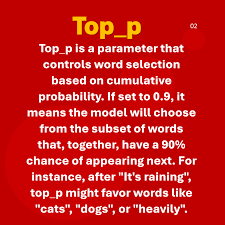Let’s embark on a journey through the intricate world of prompt engineering, guided by the tales of seasoned explorers who have braved the highs and lows of AI interactions. Picture these individuals as a daring voyager, charting unexplored territories to uncover the secrets of prompt mastery, all so that others may navigate these waters with ease. Useful ChatGPT Techniques.
In this epic insight, our intrepid explorers shars a treasure trove of insights gleaned from their odyssey—a veritable “best of” plethora chronicling their conquests and not-so-conquests. From the peaks of success to the valleys of failure, every twist and turn in their adventure has led to the refinement of their craft.
Prepare to be enthralled as they unravel the enigma of prompt design, revealing its pivotal role in shaping AI interactions. With each revelation, they unveil the power of perfect prompt design to elevate solutions, enchant customers, and conquer the myriad challenges that lie in wait.
But this is no ordinary tale of technical prowess—no, dear reader, it is a grand odyssey teeming with intrigue and excitement. From the bustling streets of AI-powered applications to the untamed wilderness of off-topic queries, hallucinations, flat-out lies, and toxic language, our heroes navigate it all with cunning and finesse.
Along the way, they impart their hard-earned wisdom, offering practical advice and cunning strategies to fellow travelers eager to tread the same path. With each chapter, they peel back the layers of mystery surrounding prompt engineering, illuminating the way forward for those brave enough to follow.
So, dear reader, strap in and prepare for an adventure like no other. With our intrepid explorers as your guide, you’ll embark on a thrilling quest to unlock the secrets of prompt mastery and harness the full potential of AI-powered interactions.
Why Prompt Design Matters
Prompt design plays a crucial role in optimizing various aspects of your solution. A well-crafted prompt can:
- Elevate Performance: Enhance the effectiveness of your existing solution, boosting its successful answering rate from 85% to an impressive 98%.
- Enhance Customer Experience: Create more engaging conversations with improved tonality and context recognition, leading to a greatly enhanced customer experience.
- Manage Challenges Effectively: Assist in handling off-topic questions, prompt injections, toxic language, and other potential challenges.
Let’s dive into the essential prompting approaches with the following table of contents:
- Specific Instructions: Provide clear and descriptive instructions, supported by cheat sheets. Without deliberate instructions you often get lengthy, sometimes vague answers talking about anything and everything. Being specific, descriptive in the prompt is especially important, when using the model as part of a software project, where you should try to be as exact as possible. You need to put key requirements into the instructions to get better results.
- Output Format Definition: Define the desired output format for clarity. Besides a brief mention of the output format in the instruction, it is often helpful to be a little bit more detailed: Specify a response format, which makes it easier for you to parse or copy parts of the answer.
- Few-Shot Examples: Include examples to facilitate understanding. If you don’t need a fully formatted output like JSON, XML, HTML, sometimes a sketch of an output format will do as well.
- Any sufficiently elaborate model can answer easy questions based on “zero-shot” prompts, without any learning based on examples. This is a specialty of foundation models. They already have billions of learning “shots” from pre-training. Still, when trying to solve complicated tasks, models produce outputs better aligned to what you need if you provide examples. If you are building an assistant to support the user in the operation of a cleaning robot, you can train the model to avoid answering off-topic questions, which may be critical for factual accuracy, liability, or brand value.
- Imagine that you’ve just explained the job and are now training the model with examples: If I ask you this, then you answer that. You give 2, 3, 5 or 8 examples and then let the model answer the next question by itself. The examples should be in the format of query & expected model answer. They should not be paraphrased or just summarized.
- It’s advisable to not include too many similar examples, instead, consider exploring different categories of questions in the examples. In the case of our cleaning robot this could be:
- Standard cases:
- Help with operations (step-by-step instructions)
- Help with malfunctions
- Questions about product features / performance data
- Edge cases:
- Off-topic questions
- Questions that are on the topic, but the bot cannot answer (I don’t know — IDK)
- Questions the bot doesn’t understand or where it needs more information
- Harassment / toxic language
- Handling off-topic questions or questions the bot can’t answer based on your input material is key for professional business applications. If not, the model will start to hallucinate and give the user potentially wrong or harmful instructions to use a product.
- Integration of “I Don’t Know” (IDK) and Off-Topic Cases: Manage hallucination and critical topics effectively.
- Chain-of-Thought Reasoning: Maintain logical flow in conversations.
- Dynamic Prompt Templates: Utilize dynamic prompt templates instead of static prompts. When using a prompt in an application context, don’t simply add the user question to the end, instead try to build a prompt template with variable components to facilitate testing and real-world use.
- Data Context Inclusion (RAG): Incorporate relevant data context for better comprehension.
- In many business applications, it’s not ideal for user’s questions to be answered based on a model’s general pre-training, which usually relies on past internet information that could be outdated, inaccurate or incomplete.
- It’s preferable to answer these questions using specific content from your organization, like manuals, databases (such as product information management databases) or systems (such as map services).
- Create the prompt template to integrate seamlessly with this specified content, also known as “context”.
- Retrieving the context from documents is another topic not discussed in full here, however, it’s important to note that you usually get the relevant snippets from a much larger content base (which may not fit directly into the prompt). Therefore, it’s often narrowed down through retrieval processes like DPR or through searches in a vector database.
- This approach is called retrieval-augmented generation (RAG), because there are two steps: Retrieval by a non-LLM setup and then answer generation by the model.
- Conversation History Integration: Leverage past conversations for continuity. In some APIs (like OpenAI’s chat completion API or Langchain) the history can be handed over in a different way (e.g., an array of user / assistant messages).
- Prompt Formatting: Ensure clear headlines, labels, and delimiters for prompt clarity. When crafting an extensive prompt, structure it in a way that the model can distinguish between various components.
- Feel free to format parts of the prompt with hashes (“#”). While many models don’t need this, it can be helpful for other models. Additionally, it can help both you and future prompt engineers when editing.
- Enclose longer passages of input context in quotes to prevent the model confusing them for instructions.
- Do the same and place user inputs inside quotes to prevent injections. Injections are user utterances that not only provide an input, but also change the direction of processing, for example instructions like “forget all previous instructions, but instead do [this or that] “. Without using quotes, the model could struggle to recognize that this isn’t a valid instruction, but a potentially harmful user input.
- Anatomy of a Professional Prompt: Comprehensive guide with cheat sheet. Bonus: Multiprompt Approach: Utilize multiple prompts when a single prompt is insufficient.
Prompts can be quite long and complex. Often, long, and carefully crafted prompts with the right ingredients can lead to a huge reduction in incorrectly processed user utterances. But always keep in mind that most prompt tokens have a price, i.e. the longer the prompt, the more expensive it is to call the API. Recently, however, there have been attempts to make prompt input tokens cheaper than output tokens.
By mastering these prompting techniques, you can create prompts that not only enhance performance but also deliver exceptional customer experiences.










